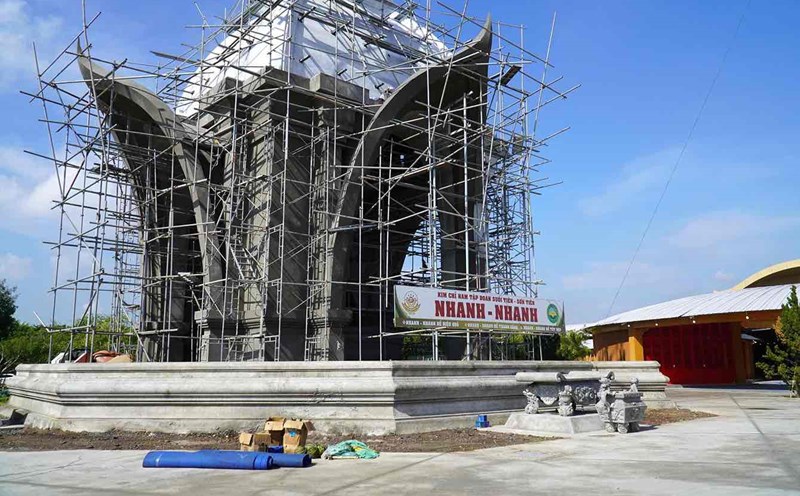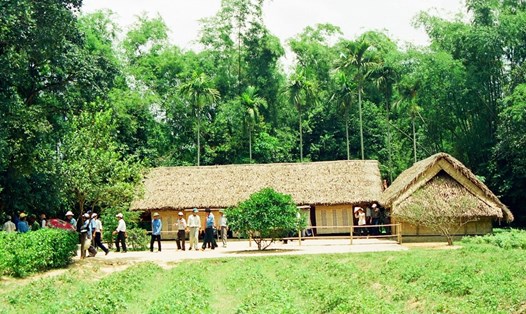That is when the saline winds suck the breath of the ocean and the endless roar of the sea waves invite the soul of man. Let's move our sails up for the dream ship to set sail.
Swinging far and wide in the middle of the coastal area, there is a garden of land that is still fortunately not yet enriched by the wave of tourism industry. This place was originally a truly "foreign peach" wild place, then because of that absolute wild scene it became "hell on earth", and now it has become a piece of paradise.
That place is Con Em - the old name of Con Son and then Con Dao - which was an archipelago lying in the middle of the ocean, used to calmly give "the people who patch the sky when they miss their steps". The name Con minh itself evokes a magical feeling of confusion in an island region filled with adventure and danger.
According to the study of scholar J.C Demariaux of the Indochina Research Association during the colonial period, this is an island filled with strange and dangerous reptile creatures such as snake rhinos, flyinganards, giant sea turtles described as "monsters with golden scales, cows and thousands of newly blooming cows".
This island area has welcomed countless people who bring with them the spirit of exploration, adventure and love to stir up water in the sky. The cruise ship Marco Polo stopped here on his way to Venice after being a guest of Emperor Ho Tat Liet in the 13th century.
The British East India Company also wanted to turn Conh Lhau into a salt-making trader in the 18th century. However, the French, according to the Versaille treaty signed on November 28, 1787 between King Louis XV and King Gia Long, soon owned this island and converted Con Dinh land into a prison for prisoners of the poor and the overseas Vietnamese who were determined to gain independence.
Although Con Dao was later renamed Con Son and Con Dao, traces of fierceness are still printed everywhere such as: Ma Thien Lanh, Ship Bridge 914, Lo Voi, Chuong Bo, Chuong Cop, Hang Duong, Hang Keo, Chua Mountain, Phi Map Cape... that have been terrifying to people for more than a hundred years.
But now, in this land, there is only the peaceful beauty of the pearl island because people are still afraid of the fierce traces that have turned this into a sacred area, so they do not dare to take strong measures, but still have to "go far and wide". Fortunately, Con Dao still exists thanks to that.
The Con Dao archipelago (currently Con Dao district of Ba Ria - Vung Tau province) has an area of about 76km2, including 16 islands, the largest of which is Con Son island. This place is located in the middle of the ocean, 185km from Vung Tau city, 230km from Ho Chi Minh city, and about 83km from Can Tho city.
The geographical distance between Con Dao and the central cities in the mainland is not too far, however, this is a rare island area in Vietnam that does not have to endure "huge landfall" during the tourist season.
Therefore, no matter where it is noisy and bustling, this place is still littered with roads covered with banyan leaves, with images of people leisurely eating on the sidewalk, or sitting helplessly leaning against the hundred-year-old banyan trees, eyes looking up high to see the blue sky, white clouds passing through the leaves.
Bang in Con Dao has a beauty, mettle. Do not know whether to infuse soil, wind, water of the soil in the middle of the ocean, so Bang has such a heroic quality? Or due to the paralyzed spirit of the revolutionary class that was exiled here, it seeped into the eagle.
According to the Con Dao National Monuments Conservation Center, a total of 53 ancient banyan trees were recognized as Heritage Trees in 2012. These banyan trees are all between 130 and 150 years old, dating back to the year the French colonialists began building the prison in 1862.
Con Dao banyan tree belongs to the variety of forest trees, leaves, and fruits that are larger than banyan trees in other places. The trunk does not grow straight but leans to the side of the trunk to take strange shapes such as tarpaulins, nghiep phong, and con ngan. The banyan leaves are large and thick, when they first bloom, they are dark green, when they are about to fall, they are suddenly red with a color like a bottle ofhon.
Struggling with the year-round strong sea winds and tropical storms, the banyan tree in Con Dao has to plant deep roots, bloom large roots, develop a flexible trunk, rough skin, hooked tendons, trunk with many huge and mysterious horns, completely different from the banyan tree in the mainland. If the prison is a revolutionary school, I practice the will of man, then here is also a prison to stand firm for a century.
The island of Con Dao is not afraid of places that are considered "hell on earth". Bang grows in Phu Hai lao (8 trees), Phu Son lao (7 trees), all of which are "standing outside the hundred years". Bang sent his friend to prison, became a dead letter box, became a confidential positioning for prisoners. Young banyan leaves are also food, dry banyan leaves are burned with ash to make ink to write communication letters.
Now, the prison places have been torn up, but the burning bins are still dung-filled. The banyan roads of Con Dao such as Le Duan and Ton Duc Thang can be considered the most beautiful tree roads in Vietnam because the banyan rows stand between the ocean and the mainland, dividing between an always- rolling object and an absolutely calm object.
Therefore, when sitting at the Con Son coffee shop windy with the ocean, we can hear the voices of ancient but still vibrant bandits. These banyan trees look straight at the 914 train bridge, which was formed from the lives of 914 prisoners and thousands of prisoners.
In the cheerful, cheerful singing, sometimes the cheerful and sublime rhythm of the Bang, a Con Dao filled with unspoken sounds. In which, there is absolute peace for those who overcome thousands of waves, leave their place to bloom and sit here listening to the hospital.
Therefore, the beauty and climate of Con Dao are concentrated in the banyan trees that have sprung up since the mid-18th century. Bang has witnessed all the changes and changes of this island, of this sea area of the island, but thanks to Bang, the Con Dao's roots are preserved and passed down.
Con Dao not only has Hon Bay Canh, Hon Cau, Hon Tre Bay, Chim Chim cape, Dam Trau beach, Tau Be cape, Ca Map cape, Ong Dung beach, Ong Dung primeval forest, Nui Chua, Ma Thien Lanh bridge, prison relic system, Hang Duong cemetery... but also has the banyan trees that serve as a shelter for the soul of the island.










